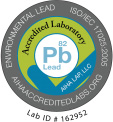
Healthcare facilities, such as hospitals and nursing homes, usually are populated with those who are at the highest risk for Legionnaires’ disease. Anyone who’s older and who has other risk factors, such as current or former smokers, those with chronic disease, or weakened immune systems are more likely to experience severe consequences if exposed.
Hospitals are vulnerable because of their complex water systems. Hospital-acquired Legionnaires’ disease has been reported from many hospitals since the first outbreak of this disease in 1976. Potable water has been the environmental source for almost all reported hospital outbreaks. Microaspiration is the major mode of transmission in hospitals; although showering (which is often a way it’s spread in hotels) is not the usual mode of transmission in hospitals.
The Centers for Medicare & Medicaid Services and the CDC consider it essential that health-care facilities have an extensive water-management program to deal with Legionella and other waterborne pathogens.
Routine environmental culture of the hospital water supply for legionella has proven to be an important strategy in prevention. Even with such oversight, however, outbreaks at health-care facilities still make headlines.
Wisconsin Water-Wall Outbreak
In 2010, eight people contracted the severe and potentially life-threatening form of pneumonia caused by the bacteria. This outbreak of Legionnaires’ disease was in a Wisconsin hospital. It was linked to a decorative water wall in a hospital lobby. This architectural feature can pose dangers in a health-care setting, especially for people with weakened immune systems.
They all had walked by the water wall in the main hospital lobby. Since Legionnaires is spread through inhalation contact with contaminated water sources these water features can be a big risk.
VA Hospital Outbreak – Pennsylvania
At least 22 veterans fell ill and six died in a Legionnaires’ outbreak from February 2011 to November 2012 at VA campuses.
The facility’s entire water supply was contaminated due to improper maintenance on their water supply. Their water source was tested and Legionnaires was found in the water system used for showers and drinking.
Stanford General District Hospital – Britain
In April 1985, 175 patients were admitted to the Stafford Hospital with chest infection or pneumonia, 28 of which died. The medical diagnosis showed that this was Legionnaires’ disease and the immediate epidemiological investigation traced the source of the infection to the air-conditioning cooling tower on the roof of the Stafford District Hospital.
Mount Carmel Grove City Hospital – Ohio
In 2019, a Legionnaires’ disease outbreak at this health care facility was traced to the hot water system and likely was the result of inadequate disinfection. There were 16 cases, including two deaths, at the suburban Columbus hospital.
The hospital had just recently opened that same year.
Every year, the federal Centers for Disease Control and Prevention receive reports of about 3,000 people diagnosed with Legionnaires’ disease. But experts say that many more cases go undiagnosed and between 8,000 to 18,000 people wind up in the hospital. More than 10 percent of cases are fatal. Some of the most common symptoms, such as shortness of breath, cough and severe fatigue, are also associated with pneumonia.
Contact SanAir Laboratories for trusted testing. We use a two-step process for the identification of Legionella species from water sources. SanAir Provides Legionella Sample Kits complete with all necessary collection tools and free overnight shipping for all incoming samples.












